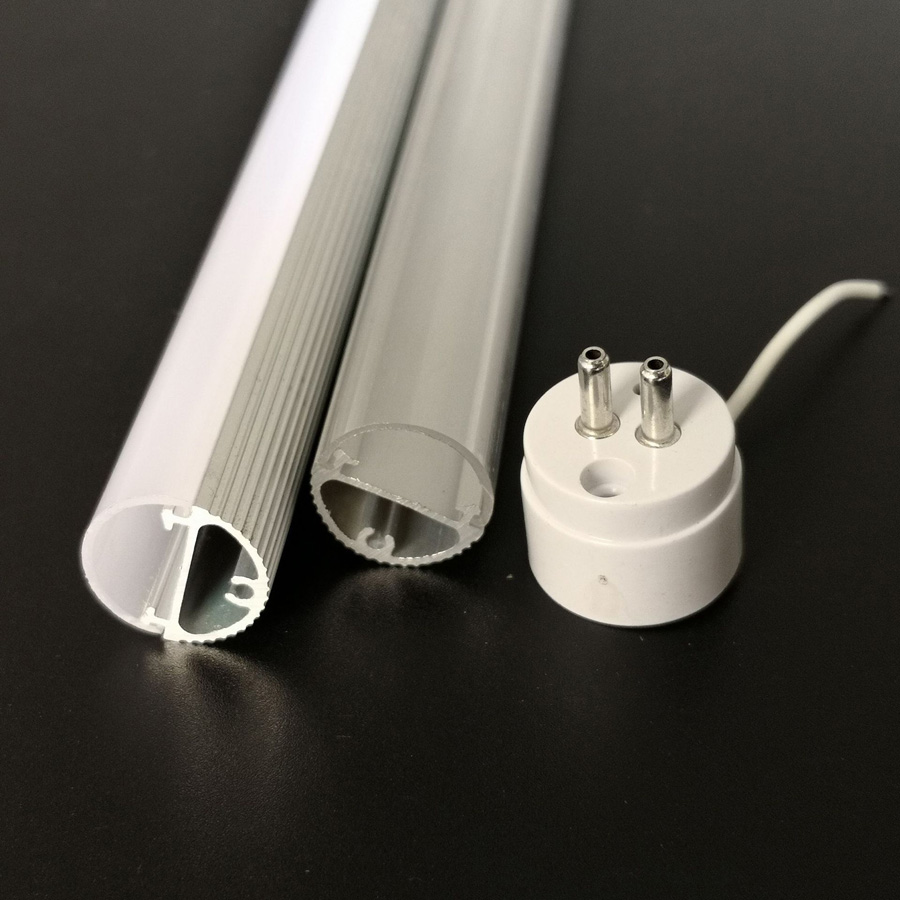Illuminating Compliance: Regulations and Standards for LED T5 Plastic Tube Housing
2023-12-08
Introduction:
In the ever-evolving landscape of lighting technology, the manufacturing and design of LED T5 plastic tube housing are not exempt from stringent regulations and standards. These guidelines ensure the safety, performance, and environmental impact of LED T5 tubes. In this blog, we'll delve into the key regulations and standards governing the manufacturing and design processes, shedding light on the importance of compliance in the world of LED lighting.
1. Safety Standards:
Safety is paramount, and LED T5 plastic tube housing must comply with safety standards to protect both consumers and the environment. Standards such as UL (Underwriters Laboratories) and CE (Conformité Européene) certification ensure that the housing meets specific safety requirements and has undergone rigorous testing for electrical safety, fire resistance, and other potential hazards.
2. Energy Efficiency Standards:
With a global push toward energy conservation, LED T5 tubes are expected to meet energy efficiency standards. Organizations like ENERGY STAR set criteria for energy-efficient lighting products, including LED tubes. Compliance with these standards ensures that LED T5 plastic tube housing contributes to reducing energy consumption and environmental impact.
3. RoHS (Restriction of Hazardous Substances) Compliance:
LED T5 tube housing must adhere to RoHS regulations, restricting the use of hazardous materials such as lead, mercury, cadmium, and certain flame retardants. RoHS compliance is crucial for environmental protection and ensures that the manufacturing process and end-product align with environmental sustainability goals.
4. IP (Ingress Protection) Ratings:
In environments where exposure to dust, moisture, or other contaminants is likely, LED T5 plastic tube housing may need to meet specific IP ratings. IP ratings, such as IP65 or IP67, indicate the level of protection against ingress of solids and liquids. These ratings guide the selection of LED T5 tubes for various applications, from clean indoor spaces to challenging outdoor environments.
5. WEEE (Waste Electrical and Electronic Equipment) Directive:
The WEEE Directive mandates the proper disposal and recycling of electronic waste. LED T5 plastic tube housing manufacturers must comply with WEEE regulations to ensure responsible end-of-life management, minimizing the environmental impact of discarded products.
6. Performance Standards for Light Output and Color Quality:
Organizations like the International Electrotechnical Commission (IEC) set standards for the performance of lighting products, including LED tubes. These standards define criteria for light output, color rendering index (CRI), and other performance indicators, ensuring that LED T5 plastic tube housing meets established benchmarks for quality and consistency.
7. IES (Illuminating Engineering Society) Standards:
IES establishes standards and recommendations for the design and application of lighting. LED T5 plastic tube housing manufacturers often refer to IES standards for guidance on factors such as illuminance levels, color temperature, and uniformity to ensure that the lighting solution meets industry-accepted norms.
8. Local Building Codes and Regulations:
Compliance with local building codes is essential for the installation of LED T5 tubes. These codes may dictate factors such as emergency lighting requirements, placement of fixtures, and other considerations to ensure the safety and functionality of the lighting system.
Conclusion:
Navigating the complex landscape of regulations and standards is essential for manufacturers and consumers alike in the realm of LED T5 plastic tube housing. Compliance with these guidelines not only ensures the safety and performance of the product but also contributes to the broader goals of sustainability and energy efficiency. As LED technology continues to illuminate our spaces, adherence to regulations remains a beacon guiding the industry toward a brighter, safer, and more sustainable future.



